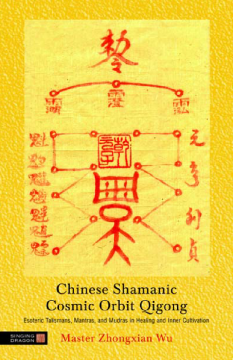
Additional Information
Book Details
Abstract
Chinese Shamanic Cosmic Orbit Qigong is an advanced form of Qigong from one of China’s esoteric traditions. Never before written about in the West, this form offers great cumulative benefits from regular daily practice. Master Wu describes the practice in detail, including the meaning and significance of the Chinese names for each movement, with its shamanic roots, and provides the mantra, visualization, and mudra for each as well as explaining the therapeutic benefits and talismanic aspects. The book is fully illustrated, and there is a handy reference quick guide at the end showing the entire orbit.
This unique book will be essential reading for advanced students and practitioners of Qigong and anyone interested in Daoism, or the ancient wisdom traditions of China.
Master Zhongxian Wu is the lineage holder of four different schools of Qigong and martial arts. He was Director of the Shaanxi Province Association for Somatic Science and the Shaanxi Association for the Research of Daoist Nourishing Life Practices. Since 1988, Master Wu has instructed thousands of students, both Eastern and Western. He synthesizes wisdom and experience for beginning and advancing practitioners, as well as for patients seeking healing, in his unique and professionally-designed courses and workshops. Master Wu is the author of Seeking the Spirit of the Book of Change: 8 Days to Mastering a Shamanic Yijing (I Ching) Prediction System and Vital Breath of the Dao: Chinese Shamanic Tiger Qigong - Laohu Gong, both also published by Singing Dragon. Please visit www.masterwu.net for details about his teachings.
Zhongxian Wu's latest book, Chinese Shamanic Cosmic Orbit Qigong, successfully continues his previous explorations of the highly secret shamanic tradition of self-cultivation as practiced on Mt. Emei in Sichuan. He provides a comprehensive and very accessible introduction to the main concepts and principles, then outlines twelve distinct exercises that tend to focus on the internal guiding and activation of qi, supported by hand and arm movements as well as mental visualizations and specific breathing patterns. The exercises can be done one by one or in an integrated sequence. They offer a potent introduction to Daoist meditation and open a unique access to our internal energies. A great book for beginners and advanced practitioners alike.
Livia Kohn, Ph.D., Professor Emerita of Religion and East Asian Studies, Boston University
